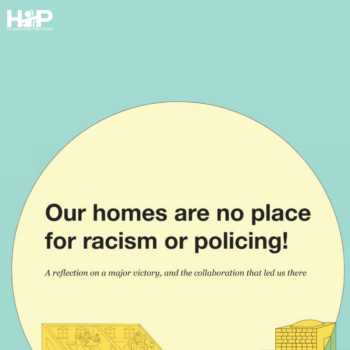| By Evan Bissell, Catherine Harrison and Susie Levy |
UC Berkeley School of Public Health and Department of City & Regional Planning
For more information about the basis of this post, visit our web-based narrative.
Health agencies across the country are working to develop leadership in advancing health equity. These efforts often look to build power through developing partnerships through an inside-outside strategy.
In one such effort, last February the Minnesota Department of Health (MDH) released its Advancing Health Equity Report to the state legislature. The report was striking in its explicit analysis of structural racism – the normalization of an array of dynamics, historical, cultural, institutional, and interpersonal, that routinely advantage white people while producing cumulative and chronic adverse outcomes for people of color. The report says:
“Race is not the only factor in structural inequities, but is a significant one. Even when outcomes related to other factors such as income, gender, sexual orientation, and geography are analyzed by race/ethnicity, greater inequities are evident for American Indians, African Americans, and persons of Hispanic/Latino and Asian descent. A concerted effort to specifically address the issues of structural racism and to develop the language and tools to uncover and change the structures shaped by racism will be invaluable for addressing other structure-based inequities.”
According to the report, “Health is something we create as a society and as communities, not something an individual can purchase or produce alone.” It recommends an array of actions that focus on many sectors of governance and the structure of the Department of Health itself. The report received prominent news coverage and its analysis has been used by community groups fighting for minimum wage, workers rights, and other issues. But the story of MDH leading with race did not start with the release of the report.
For many years the Department and community partners have worked to reframe the narrative of what creates health for Minnesotans, but have faced political pushback when working to address the social determinants of health. For MDH to address issues like housing, education, transportation, and incarceration, it needed to build relationships externally, across agencies and with community partners. The Healthy MN Partnership, a collaboration between the Health Department and community members and organizations, was formed and has proved influential in shifting the narrative of health. By challenging MDH to shift its view from measuring sickness to ensuring healthy living conditions, the broader lens of social determinants of health was adopted.
This shift didn’t happen in a vacuum. The theory of change guiding this work is grounded in a community-organizing perspective, which moves beyond the connection between health and living conditions, and recognizes that the capacity to act is critical to impact health.
According to MDH, the capacity to act – another way of saying power – is built through organizing people, narrative and resources in the following ways:
- People: Develop accountable relationships and partnerships that align interests and directly impact decision-makers.
- Narrative: Build public understanding and public will to support action that reflects health equity.
- Resources: Shift the way resources, processes and systems are structured to advance health equity.
To learn more, see our web-based narrative, from which the infographics above are reproduced.







